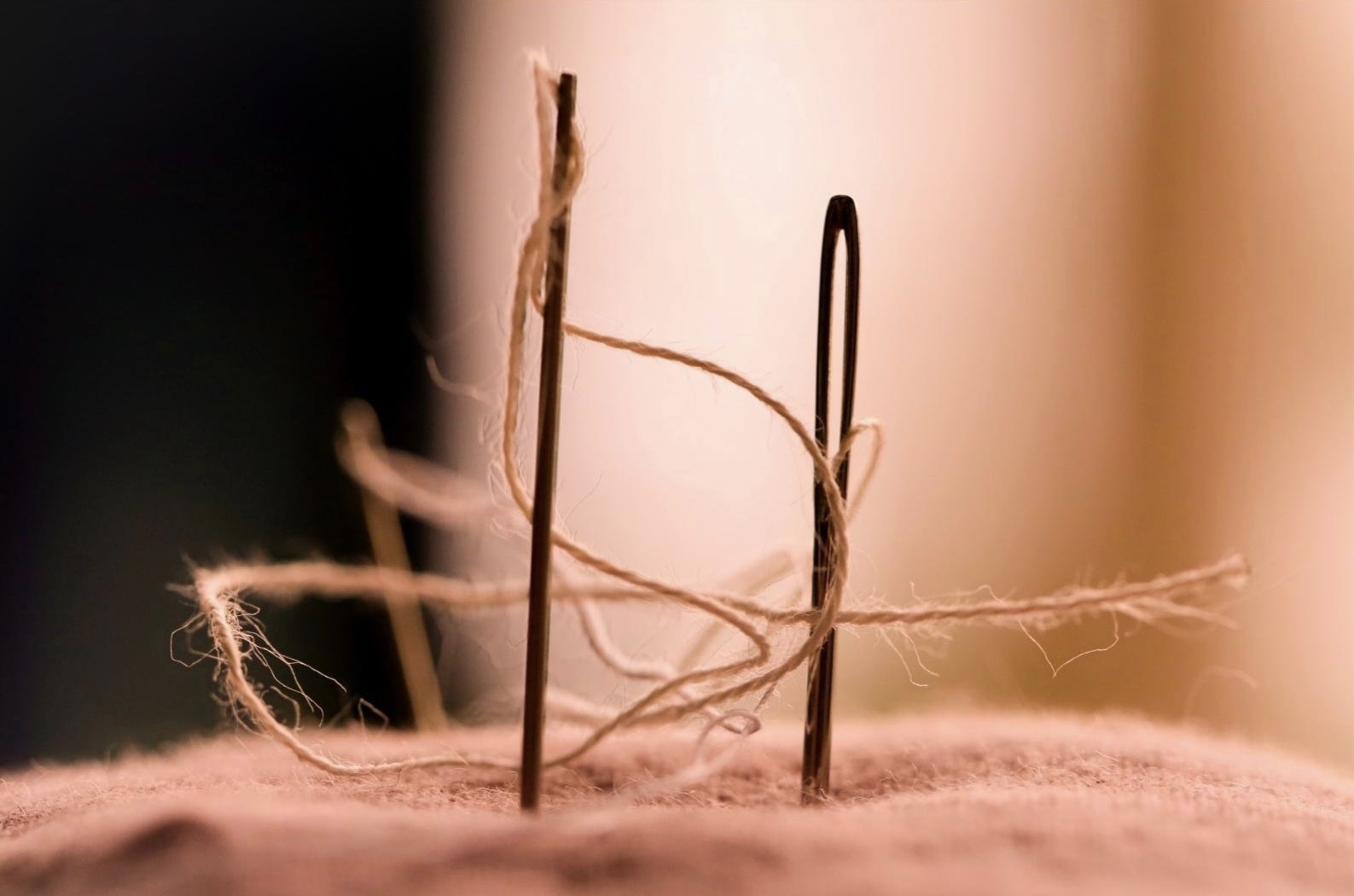Embroidery needles differ from standard sewing needles in many ways. While it is not impossible to use a sewing needle to embroider a garment, it is not recommended. This is because embroidery needles are specifically designed to ensure that the process of embroidering is easier, the thread is protected from breaking, and that you have a better-quality finished product.
The Art of Embroidery
Embroidery is the method of decorating fabric with a needle and thread or needle and yarn. Many different types of items can be embroidered, including hats, shirts, dresses, blankets and denim, and often beads or sequins are used to further embellish the piece.
There are many types of embroidery, including tackle twill embroidery (sewing a fabric patch onto a garment), felt embroidery (applying an applique to a garment) and puff embroidery (embroidering over a layer of foam).
Historically, early examples of embroidery have been found dating back as early as 500 BC in China, with many more examples found worldwide over subsequent centuries. Throughout history, embroidered garments have been seen as a symbol of wealth and embroidery was often used as a means for women to document their life, if they were unable to read and write.
Embroidery Needles
To determine which needles are most suitable for a specific type of embroidery, we must first understand the parts of a needle.
A needle is made up of three parts: the eye, the point, and the shaft. All these parts are key when learning how to choose an embroidery needle.
The eye of the needle is the hole at one end, designed to keep the thread attached to the needle. The size of the eye of a needle will differ depending on the use of the needle: needles designed for hand-sewing generally have a circular eye, because the thread doesn’t wear as readily as when a machine is used. Sewing needles designed for machine use generally have an eye that is irregularly shaped, and ridged.
The point of a needle is the very tip, at the opposite end to the eye. It is the part that is intended to puncture a hole in the fabric, to draw through the thread to the other side. Sharp points are generally used for tightly-woven fabrics such as cotton, whereas round (or ‘ballpoint’) tips are more useful for loosely-woven fabrics such as a knit.
The shaft of a needle is length of the needle, connecting the eye at one end to the point at the other. Needle shafts vary in length depending on what the needle is being used for, and can be embellished with features such as a ‘scarf’, designed to make specific types of sewing easier. A scarf is an indentation in the shaft of a needle, and its purpose is to limit the amount the thread frays during the embroidery process.
The oldest known example of a needle, which was made from animal bone, dates back to 61,000 years ago, and was discovered in South Africa. It was most likely used as a method of joining animal skins, most likely for a form of protective clothing.
How Are Embroidery Needles Different to Sewing Needles?
1. The Eye of the Needle
Embroidery needles often have larger eyes than regular sewing needles, and are oval-shaped. This is so that the eye can accommodate thicker or even multiple embroidery threads.
Tapestry needles and Chenille needles also have similarly shaped eyes, to allow for larger threads or wool. Ribbon embroidery needles have a variety of eye sizes, depending on the size of ribbon used. The size of the eye of a needle used for tackle twill embroidery will depend on the thread used, but usually a standard embroidery needle with a large eye will do the job.
2. The Needle Point
When considering how to choose an embroidery needle, bear in mind that embroidery needles are often sharp, so that they can pierce through tightly-woven fabrics and felts with ease.
Other types of needles, including tapestry needles, have a blunt tip. Rounded, blunt tips are only used when the holes in the woven fabric or knit are large enough that the fabric does not need to be pierced. This is generally not the case with embroidery, when fine details and embellishments are added to a blanket or clothing garment.
3. Needle Length
Embroidery needles vary in length depending on the type of thread and fabric used. Generally, embroidery needles are size 1 – 12, with 1 being the longest needle and 12 being the shortest. A size 1 embroidery needle would have a length of 48.5mm, and a size 12 would have a length of 29.5mm.
The choice of needle length is closely related to the needle thickness.
4. Needle Thickness
As with needle length, embroidery needles vary in thickness. A size 1 embroidery needle would have a thickness of 1.02mm, and a size 12 would have thickness of 0.41mm.
How to choose an embroidery needle will depend on the thickness of the needle; bear in mind that it should glide through the fabric without needing a tug to get it through, and there should be minimal resistance. This is because forcing a needle through a fabric causes friction on the thread, making it wear or break more easily.
Embroidery needles should be small enough that they don’t leave a hole in the fabric after passing the thread through.
5. Needle Scarf
Embroidery needles often have a scarf, which is the term given to the indentation on the back of the needle that starts next to the eye and goes up to the shaft.
The purpose of the scarf is to prevent the thread from fraying or breaking while being used, to ensure a sleek finished product.

